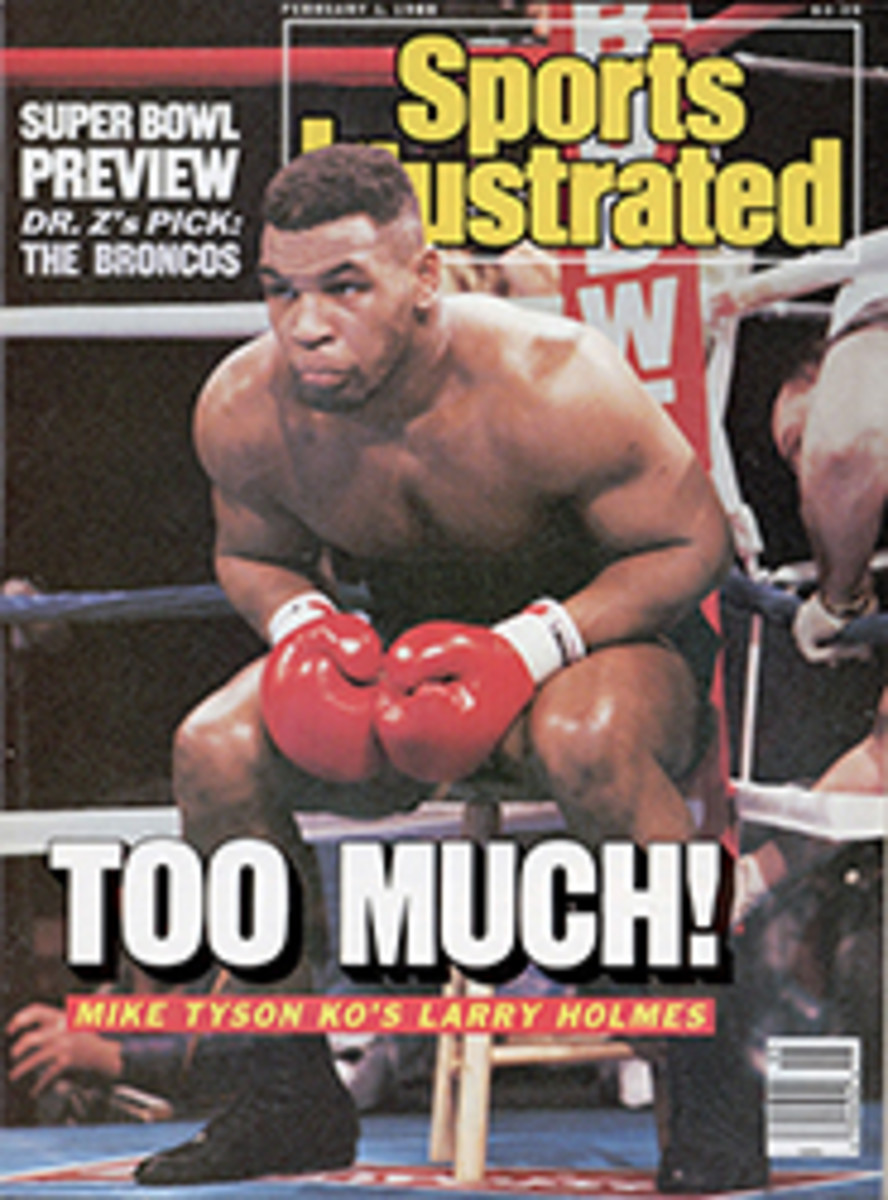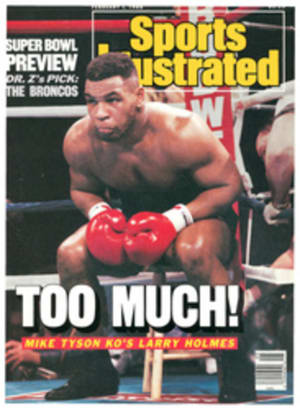
DISASTROUS DAYS IN THE DESERT
On new year's day, 602 race-ready cars, trucks and motorcycles made their way through a crowd of 100,000 cheering Frenchmen and gathered at Versailles for the first leg of the Paris-to-Dakar rally. That was the last time anything remotely resembling a cheer would be associated with the 22-day event that, from beginning to end, proved to be nothing less than a tragedy. With any luck, or common sense, this, the 10th annual running of the race, will be its last.
In the course of racing 7,979 miles, many of them over the searing wastes of the Sahara, the body count directly attributable to the competition was six. Three other deaths have been blamed on a fire started by a careless support team. A mechanic remained in critical condition last week with a crushed rib cage and a former motocross champion had broken his neck.
All this in a rally? Paris-to-Dakar bears almost no resemblance to the type of leisurely amateur road rallying carried on in the U.S., in which the driving instructions read something like "Take left at barn with weathered Mail Pouch sign, average 19.7 mph to next stop sign." For one thing, 85% of this year's Paris-to-Dakar route hadn't been used for previous rallies; for another, the average speed was closer to 100 mph.
Then, too, most U.S. rallies are clubby events, the results of which are known to few people other than the participants. Paris-to-Dakar is anything but. To European sports fans, especially those in France and Italy, the race has become something of a winter equivalent to the summer's Tour de France. It is also a huge commercial enterprise. The Economist of London estimates that the total expenditure for this year's rally—including drivers' salaries, cars, support crews, spare parts, fuel, entry fees, bribes, sponsorship contracts and television rights—was $100 million.
The question is: For what? Private entrants have almost no chance of winning and nothing to gain but the adventure. And the big auto companies aren't in it for the prize money, which doesn't begin to match the expenses of a team such as the one entered by Peugeot, with its four race cars, seven support vehicles and 62 mechanics. But a win in what's called the World's Longest Race can boost sales and become the cornerstone of a yearlong marketing campaign for the victorious company.
That explains the presence of drivers such as Jacky Ickx, the former Grand Prix star, who was driving for the French importer of the Soviet-built Lada. Or of such other big names as four-time LeMans winner Henry Pescarolo (Peugeot) and Formula One drivers Jacques Laffite and Jean Pierre Jabouille (Porsche) and Patrick Tambay (Range Rover).
Despite the heavy investment in high-priced talent and high-tech vehicles—the cost of a Porsche engineered specifically for Paris-to-Dakar is reported to have been almost half a million dollars—this year's race turned into a grotesque combination of ineptitude, greed and bizarre fate that played out before a worldwide TV audience estimated at 600 million.
After the boisterous New Year's Day send-off in Paris, the vehicles motored without incident to the south of France and the port of Sète. There they were transported by ferry across the Mediterranean to Algiers, where the serious competition began. For the next 20 days the drivers would zigzag south then west through Algeria, Niger, Mali and Mauritania to a destination on the Atlantic coast in Senegal's capital, Dakar.
On the morning of Jan. 3, the 312 cars, 109 trucks and 181 motorcycles that were competing in three of the rally's divisions blasted out of Algiers, heading for the first African overnight stop 372 miles away at El Oued. By nightfall the field had been reduced by almost 25% as vehicles got mired in dunes or lost in the desert. The drivers thought that this first stage would be a relatively easy one, but the route book provided by the race organizers was confusing and imprecise.
In the almost featureless desert, the compass headings and other information provided in the route book are the navigators' only guide to the course and the control points each vehicle must pass. Paris-to-Dakar is not organized by the Fèdèration Internationale du Sport Automobile, the association that expertly runs 11 rallies on four continents each year, but by an independent outfit known as TSO (short for the Thierry Sabine Organization, named for the race's founder, who was killed in a helicopter crash during the 1986 rally). Italian driver Giacomo Vismara (Land Rover) complained that "in one town there was no control point, as the book said there would be. There was a lot of chaos. The organizers favored the [manufacturer-sponsored] superteams."
Paris-to-Dakar's problems were soon to get much more serious than mere disorganization and favoritism. On the seventh day in Africa, during a 414-mile leg in Niger, a 10-ton, 1,200-horsepower truck built by the Dutch firm DAF hit a sand dune at an estimated speed of 110 mph and rolled over several times. The truck's navigator, Kees van Loevezijn, was thrown from the vehicle and instantly killed. The driver survived but was seriously injured. DAF withdrew its other truck and issued a statement that the company "did not wish to be associated with a race in which so many people die [in the preceding nine years there had been 17 fatalities]."
Not even 24 hours passed before another death occurred. On the Arlit-to-Agadez stage, Patrick Canado, driving a non-factory-sponsored Range Rover, crashed into a support vehicle and was killed. That night, Gèrard Lafond, a mechanic asleep in his sleeping bag on the desert floor, was run over by a 4 X 4 truck. He was evacuated to a Paris hospital with a crushed rib cage.
Then on Jan. 14, motorcyclist Jean-Claude Huger was scouting the course after a grueling speed trial when he crashed into a ditch. He would die five days later in Paris.
In Mali, the day after Huger's crash, a fire, which local police suspect was started by one of the race teams as they cooked breakfast near a stretch of railroad track, threatened to engulf the Dakar-to-Bamako train. Passengers panicked, and three were killed after jumping from the moving train.
Just three days after that, Baye Sibi, a 10-year-old girl watching the race in the town of Kita, Mali, saw one car roar by and proceeded to cross the dirt road. Another car, hidden in the dust cloud behind the first, struck and killed her. Finally, in Mauritania on the penultimate day of the race, a car being used by a film crew covering the race hit a mother and daughter and killed them both.
Throughout the race, as the death toll and the number of nonfatal injuries rose (at least two motorcyclists were paralyzed), the surviving participants would dutifully roar off into the desert each day, never knowing whether some unpredictable occurrence might leave them stranded in the middle of the Sahara. It came as no surprise when, on Jan. 8 in Algeria, the organizers discovered that there was not enough fuel for the safety crews and canceled a speed trial. A few days later another stage of the race was aborted because the support helicopters were suddenly refused permission to overfly part of Mali. Most reporters covering the event assumed that TSO—despite its operating budget of an estimated $60 million—simply hadn't come up with a sufficient fee for local officals to allow the race to pass through.
Depression and disillusionment with the rally grew wider daily. At one point L'Osservatore Romano, the official Vatican newspaper, condemned the race as "a vulgar display of power and wealth in places where men continue to die of hunger and thirst."
In the meantime Peugeot's Ari Vatanen, the 1981 World Rally Champion, had built up a huge lead as he pursued his second straight Paris-to-Dakar victory. And since Peugeot had enough spare parts on hand to virtually rebuild a vehicle overnight, it seemed that the only way Vatanen could lose would be if his car suffered a total wreck—or suddenly disappeared.
After the 17th day of the race, Vatanen parked his car in the Peugeot compound in Bamako. During the night, while he and his mechanics slept, the car was stolen. The thieves demanded $90,000 in ransom for it, but at daybreak it was spotted in a junkyard and recovered with no ransom paid.
Vatanen arrived at the starting line with minutes to spare. The race rules require, however, that a car be on hand 30 minutes before a scheduled start. Vatanen was allowed to join the field while officials decided whether to disqualify him. The next morning Vatanen was thrown out of the rally.
Thus, Juha Kankkunen, like Vatanen a Finn and a driver for Peugeot, ended up with the victory in what had become one of the most disastrous sporting events ever conducted. Kankkunen himself acknowledged that miserable fact by attempting to bypass the victory ceremonies at the beachfront finish line. But a crowd of 50,000 would not be denied its pageant, and Kankkunen reluctantly made an appearance.
Earlier, after the first two deaths had been reported, Kankkunen had said, "I feel very sad about the way the race is going. People are taking too many risks. In January next year I plan to be somewhere else on the other side of the world." One could assume that, at race's end, the grimly silent Kankkunen hadn't changed his mind.
PHOTO
STEPHANE COMPOINT/SIPA
This racer lived, but his teammate van Loevezijn was killed when their truck flipped.
PHOTO
WILLIAM STEVENS/TEMPSPORT
Grand Prix star Ickx was through when his Soviet-built Lada overturned in the sand.
PHOTO
CHRISTIAN LACOMBE/SIPA
Copters were needed to evacuate injured racers, crewmen and onlookers to hospitals.
PHOTO
Y. ARTHUS-BERTRAND/VANDYSTADT
Vatanen's Peugeot, and the race, was stolen from him only five days from the finish.
PHOTO
CHRISTIAN LACOMBE/SIPA
Some cyclists took the race lying down, but the desert course was no bed of roses.
PHOTO
D.P.P.I.
After so many senseless deaths, the victorious Kankkunen didn't feel like celebrating.
PHOTO
GAMMA-LIAISON
Amid the horrors of the race, there were some beautiful sights on the road to Dakar.

